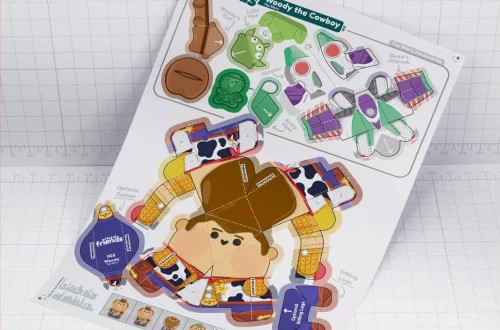The 1980s witnessed the rise of a pop culture phenomenon – Transformers. These ingenious toys, featuring robots that could transform into vehicles and other objects, captured the imagination of a generation. Their enduring legacy stems from a perfect blend of innovation, marketing brilliance, and tapping into the cultural zeitgeist of the era. This article explores the reasons behind Transformers’ success in the 1980s across four key areas:
Part 1: A Gimmick that Clicked
Two Toys in One:
The core concept behind Transformers, a robot that possesses the ability to seamlessly transform into another object, was inherently captivating. It not only offered children the allure of owning two toys in one but also ignited their creativity and encouraged imaginative play. The figures, whether transforming from a truck to a powerful robot or a jet to a cunning Decepticon, provided endless possibilities for storytelling and action-packed scenarios.
The transformative aspect of the toys allowed children to engage in dynamic play, creating narratives and adventures that encompassed the dual nature of the characters. This unique feature sparked the imagination of young fans, enabling them to bring to life epic battles, daring rescues, and thrilling adventures, effectively transforming their playrooms into dynamic arenas where their favorite Transformers characters could embark on countless exciting escapades. Ultimately, the transformative nature of the toys served as a catalyst for open-ended play, inspiring creativity and inviting children to immerse themselves in rich, imaginative worlds.

More Than Meets the Eye:
The Transformers franchise transcended mere transformation, as many of the action figures featured additional interactive gimmicks. These included light-up features, spring-loaded weapons, and interchangeable parts, which added an extra layer of excitement and complexity to the play experience. These interactive elements allowed children to not only transform the figures but also engage with various other play features, enhancing the overall appeal and entertainment value of the toys. The inclusion of such interactive elements provided children with a more immersive and dynamic play experience, sparking their creativity and imagination as they brought their favorite characters to life in exciting scenarios. These added features captivated young fans, keeping them engaged for hours on end as they explored the myriad possibilities and combinations, effectively extending the longevity and enjoyment of the Transformers toys beyond simple transformation and into a realm of endless interactive fun.
Part 2: Marketing Magic
The Power of Animation:
The success of the Transformers franchise was significantly bolstered by the launch of a compelling animated series that accompanied the toy line. The animated show not only served as a platform to showcase the captivating world of Autobots and Decepticons but also provided a deeper exploration of their ongoing battles, individual character traits, and unique abilities. The synergy between the animated series and the toy line had a powerful impact, fueling the imaginations of children and sparking their desire to own the figures depicted on the screen.
The show effectively brought the characters to life and allowed young fans to form strong emotional connections with the Autobots and Decepticons, driving demand for the toys. The animated series not only served as a form of entertainment but also functioned as a strategic marketing tool, effectively creating a seamless relationship between the on-screen adventures and the real-world toy play, contributing significantly to the enduring popularity and success of the Transformers franchise.
Catchy Slogans and Commercials:
The Transformers marketing campaign of the 1980s can be described as nothing short of brilliant. The marketing team utilized catchy slogans such as “More Than Meets the Eye” and “Transformers: Robots in Disguise,” which strongly resonated with children and sparked their curiosity. These slogans not only captured the essence of the toys’ transformative nature but also hinted at the exciting and mysterious world of the Transformers.

Additionally, the action-packed commercials showcasing the figures’ dramatic transformations and epic battles served to further amplify their appeal, creating a sense of urgency and excitement around the toys. This strategic marketing approach effectively positioned Transformers as the must-have toy of the era, building anticipation and desire within the young audience. The captivating marketing campaigns succeeded in creating a sense of wonder and excitement around the Transformers brand, making the toys an essential part of countless childhoods and solidifying their status as iconic and beloved playthings from the 1980s.
Part 3: Robots in Disguise for a Tech-Hungry Generation
The Rise of Technology:
The 1980s marked a period of significant technological advancements, with personal computers, video games, and robots becoming increasingly prominent in popular culture. This era reflected a growing fascination with technology and the future, capturing the imaginations of children and adults alike. In this landscape, Transformers emerged as a cultural phenomenon, perfectly encapsulating the fascination with futuristic technology. By seamlessly blending the elements of technology, robots, and vehicles, Transformers offered children a tangible way to interact with the futuristic world of robots. The toys not only provided a tactile experience but also allowed children to engage in imaginative play, creating narratives and storylines that reflected the era’s techno-centric zeitgeist. In doing so, Transformers became more than just toys; they became a gateway to a world where technology and innovation held endless possibilities, sparking the imagination and curiosity of an entire generation.
Sci-Fi Appeal:
The Transformers lore is a rich tapestry that intricately weaves together classic superhero tropes with a spacefaring, high-tech aesthetic. This unique blend of action, adventure, and science fiction resonated deeply with children growing up during a time when sci-fi movies and TV shows were at the height of their popularity. The intergalactic battles, the advanced technology, and the fantastical landscapes represented a captivating escape into a world of endless possibilities for the young audience. The Transformers franchise offered a tangible way for children to bring these larger-than-life stories to their own bedrooms, fostering imaginative play and creativity. The toys not only allowed children to bring the epic battles and heroic narratives to life but also provided a means for them to explore their own interpretations of the Transformers universe, effectively becoming the architects of their own thrilling adventures and quests alongside their favorite transforming robots.

Part 4: A Legacy that Transforms On
Evolution and Expansion:
Transformers, while rooted in their 1980s origins, have continued to evolve and transcend. The franchise has continually introduced new characters, intricate storylines, and even live-action movies, ensuring its enduring relevance and resonance with new generations. This adaptability and willingness to embrace change have been crucial to the franchise’s lasting success. By consistently reinventing and expanding its universe, Transformers has managed to stay engaging and captivating to fans, both old and new. This evolution has allowed the franchise to remain culturally significant, tapping into the ever-changing tastes and preferences of its audience, while also introducing the beloved characters and transforming robots to a new generation of fans. Ultimately, Transformers’ ability to evolve while staying true to its core concept has been pivotal in ensuring its enduring legacy as a beloved and iconic franchise in the realms of entertainment and storytelling.
A Collectible Passion:
For many children of the 1980s, Transformers became more than just toys; they became cherished collectibles. The desire to complete sets, find rare figures, and revisit their childhood continues to fuel a thriving adult collector market, ensuring the Transformers legacy continues to transform and find new audiences.
The Transformers’ reign in the 1980s toy market was nothing short of phenomenal. Their innovative design, engaging play patterns, and strategic marketing campaign resonated perfectly with a generation captivated by technology and science fiction. Even today, Transformers continue to captivate audiences, proving that their ability to transform transcends not only form but also time.




